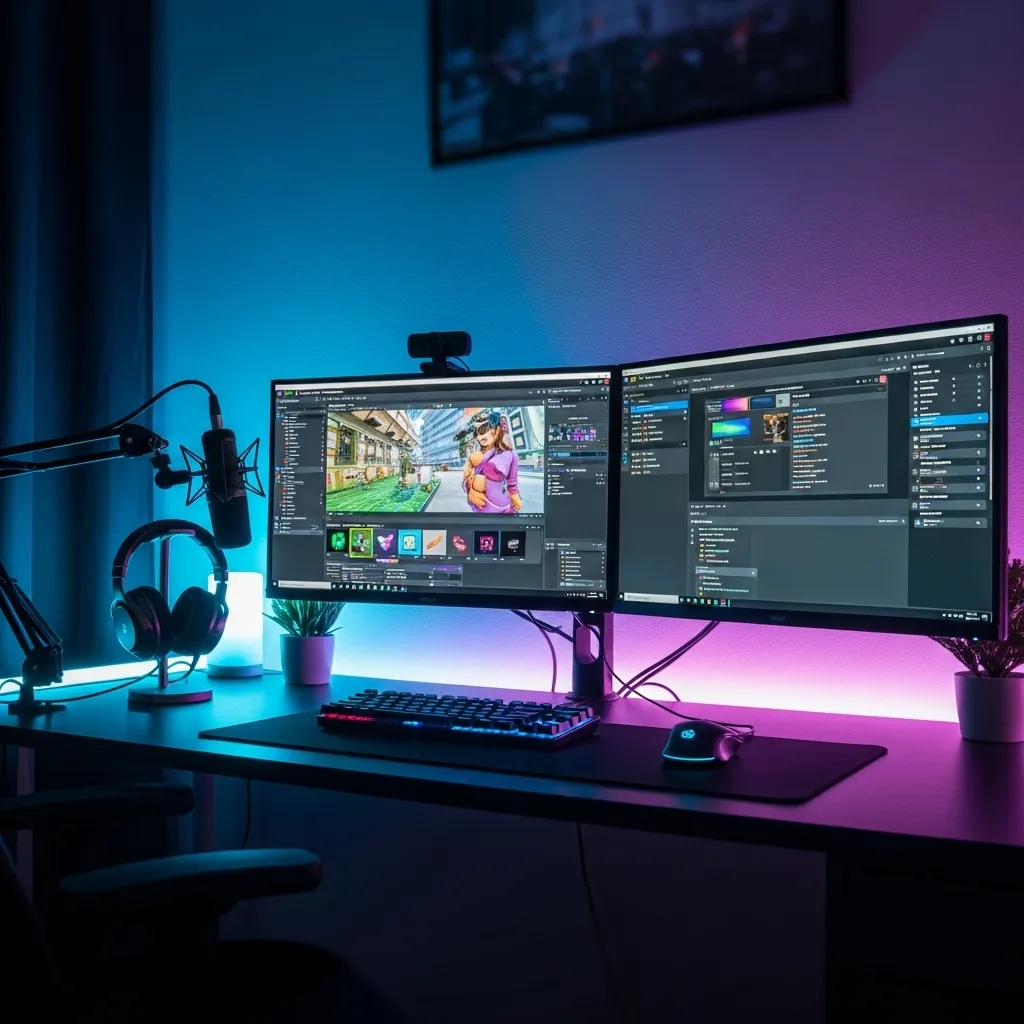
Setting up OBS Studio can be the difference between a stream that shines and one that fizzles out. Whether you’re a beginner or looking to refine your streaming workflow, mastering your OBS Studio setup is essential. In this guide, we’ll break down the top five strategies every streamer needs for a professional, engaging, and technically sound broadcast.
Your streaming experience starts with your physical setup. Invest in a reliable computer with a strong CPU and GPU, as OBS Studio relies heavily on processing power. Dual monitors can make a huge difference, letting you manage OBS, chat, and alerts simultaneously. Don’t forget a quality microphone and webcam—clear audio and sharp visuals are non-negotiable for audience retention.
Lighting is another crucial element. Even affordable LED panels can drastically improve your on-camera presence. Arrange your workspace for comfort and easy access to your streaming gear, minimizing distractions and maximizing productivity.
Before you go live, configure OBS Studio for optimal performance. Start by selecting the right encoder—hardware (NVENC, AMD, or Intel Quick Sync) is typically more efficient than software (x264) for most streamers. Adjust your bitrate according to your internet upload speed: a stable connection is vital for smooth streams. For most platforms, a bitrate between 3000-6000 Kbps is recommended for 1080p streaming.
Set your base (canvas) resolution to match your monitor, and your output (scaled) resolution to the quality you want viewers to see. Frame rates of 30 or 60 FPS are standard. For a comprehensive walkthrough, refer to the OBS Studio Official Quick Start Guide.
Scenes are the backbone of your stream’s visual flow. Create multiple scenes for different parts of your broadcast: starting soon, live, be right back, and ending. Use sources like webcams, gameplay capture, browser windows, and images to customize each scene. Overlays add personality and professionalism—consider ready-made packs like the Pastel Chill Desk Stream Pack for a cozy, retro vibe or the Metal Stream Package for a sleek, high-tech look.
Transition effects between scenes help keep your stream dynamic. Test your overlays and alerts to ensure they don’t obstruct important content. Remember, less is often more—avoid clutter and focus on clarity.
Audio quality can make or break your stream. Use a dedicated microphone if possible and set up noise suppression or noise gate filters in OBS Studio to minimize background sounds. Monitor your audio levels: your voice should be clear and balanced with game or background music.
Consider adding a virtual audio mixer for more control. Test your setup before going live by recording a sample session. If you want a relaxing vibe, pair your visuals with overlays like the Lofi Beach Stream Package for a serene backdrop.
Unstable streams drive viewers away. Use OBS Studio’s built-in stats window to monitor dropped frames and CPU usage. Always run a speed test before going live, and consider a wired Ethernet connection for reliability. Regularly update OBS Studio to benefit from the latest features and security patches—see the OBS Studio Wikipedia page for version history and platform support.
Finally, make sure you comply with your platform’s guidelines. For Twitch streamers, review the Twitch Broadcasting Guidelines to avoid accidental violations. If your style leans toward bold or edgy, you might like the Red Skull Stream Package for a unique look that stands out.
As you grow, experiment with advanced features like plugins, custom scripts, and widgets. Personalize your stream with unique branding and interactive elements. Engage with your audience through chat, alerts, and creative scene transitions. Stay consistent with your schedule and content style—consistency builds community and loyalty.
Start with a solid PC, a good microphone, and a webcam. Use default OBS Studio settings and gradually tweak resolution, bitrate, and overlays as you gain confidence.
Lower your output resolution or bitrate, use a wired internet connection, and close unnecessary background programs to reduce CPU and network load.
Choose overlays that fit your stream’s theme and are compatible with OBS Studio, like the Pastel Chill Desk Stream Pack or Metal Stream Package.
Yes, OBS Studio supports multi-platform streaming. Just configure your stream key and server URL for each platform in the settings.
Update OBS Studio regularly to access new features, bug fixes, and security improvements. Always back up your scenes and settings before updating.
Plugins are optional but can add advanced features like custom transitions, filters, and integrations. Start simple and add plugins as your needs grow.
Receive an additional 30% discount for your first order by signing up through email!